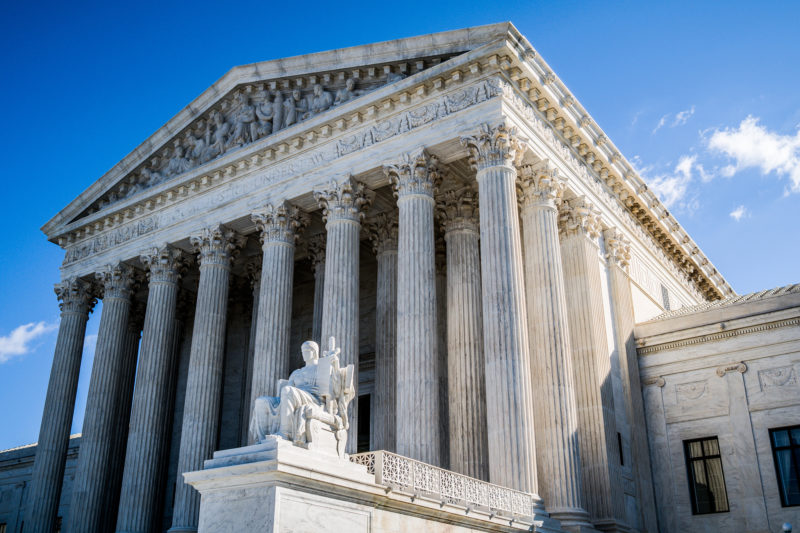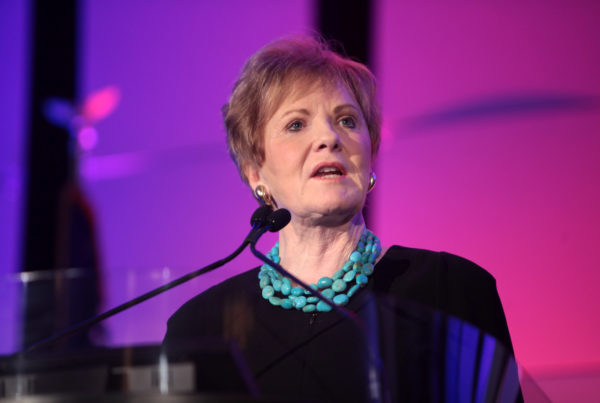Last week, Justice Anthony Kennedy announced his retirement from the Supreme Court. As a result, President Donald Trump now has the opportunity to appoint his second Supreme Court justice in as many years, and to make the Court more conservative than it’s been in decades.
But some left-leaning academics and commentators have suggested that Democrats should respond, when they’re next in power, with something called “court-packing.” This would mean adding more justices to the Supreme Court to dilute conservative power, perhaps up to 11 or even 15 justices.
It might sound extreme, but court-packing has a history in the U.S., including a connection to Texas.
The number of justices on the Court has changed several times over the last 250 years, according to University of Texas at Austin Law Professor Sanford Levinson.
“It begins with five and it gets up to ten during the Lincoln administration,” Levinson says. “And it gets to nine in 1871. And it has stayed at nine since 1871.”
The renewed interest in changing the number of justices is a result, in part, of Democrats feeling that the system is being manipulated politically.
“I think that what particularly accounts for the Democratic opposition and anger,” Levinson says, “is what was done with Merrick Garland, that he didn’t even get a hearing.”
Garland was President Barack Obama’s nominee to the Supreme Court in 2016. He was blocked by the Republican-controlled Senate.
But, Levinson says, the courts have always been subject to political manipulation “going back to the so-called “midnight judges” of the Adams administration.”
One of the most famous episodes in the history of court-packing took place in 1937, when President Franklin Roosevelt attempted to swing the Court lefward to support his New Deal policies.
“Roosevelt proposed raising the number of judges to 15,” Levinson says, “but he lied through his teeth and said that the reason to pack the Court was that there basically were a lot of old judges, over 70, who weren’t really getting the work done.” Roosevelt proposed “that whenever a judge turned 70 you would appoint another judge up until 15. Everybody realized that was simply a pretext – that the real issue is that the Court was controlled by a five-judge conservative majority.”
President Lyndon Johnson also supported Roosevelt’s court-packing plan as a young congressional candidate in 1930s Texas, but the Court ultimately remained at nine justices.
“We’ll never know if FDR would have been more successful had he been more honest,” Levinson says. “But it was very clear that his pretext just wasn’t true. And members of the Court testified before Congress that they were getting their work done just fine.”
The situation Roosevelt faced is very much like the one Democrats face today. There will likely soon be five conservative justices on the Court, and Democrats are looking for a way to curb their power.
But Levinson is doubtful that a court-packing plan could be enacted.
“I think it all depends, first of all, if the Democrats win at all,” he says. “Secondly, what the degree of their victory might be. And thirdly, the extent to which the invigorated conservative Court really will set itself against legislation passed by a Democratic Congress.“
“If this all boils down to Roe v. Wade, which is getting most of the attention, then frankly, I don’t know that there would be any kind of national movement to say, we really need to do something about the size. If, however, the conservative Supreme Court really does, for example, invalidate Obamacare, then you really might be able to stir up a national coalition saying that, it’s Congress we count on to govern, not the Supreme Court.”
As to whether the further politicization of the Court upsets the system of checks and balances, Levinson says, “the Court has always been politicized. John Marshall is the best example of that. He was one of the “midnight judges” appointed literally in the last weeks of the Adams administration, in order to do what he could to throw roadblocks in front of [incoming President] Thomas Jefferson. So there’s nothing new about the politicization of the Court. Once the Constitution says that it’s presidents who nominate, the Senate confirms, and once we have a party system, which we got no later than 1800, then judicial appointments are going to be part of the political process.”
Written by Rachel Taube.
















